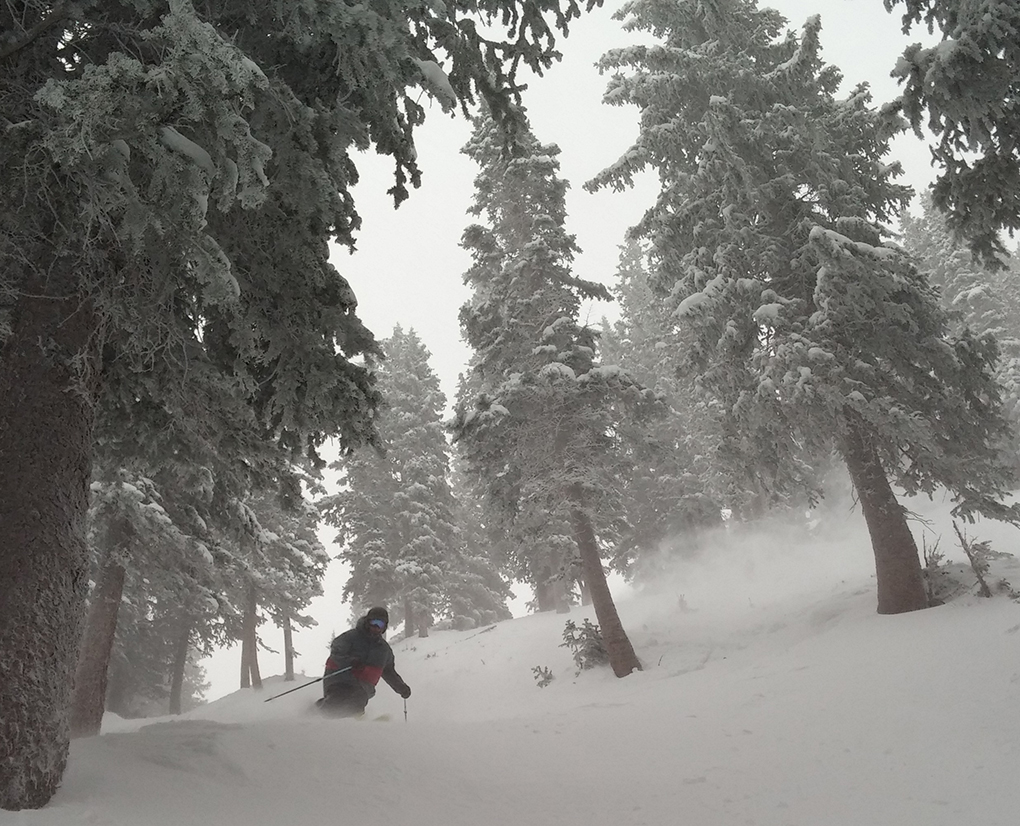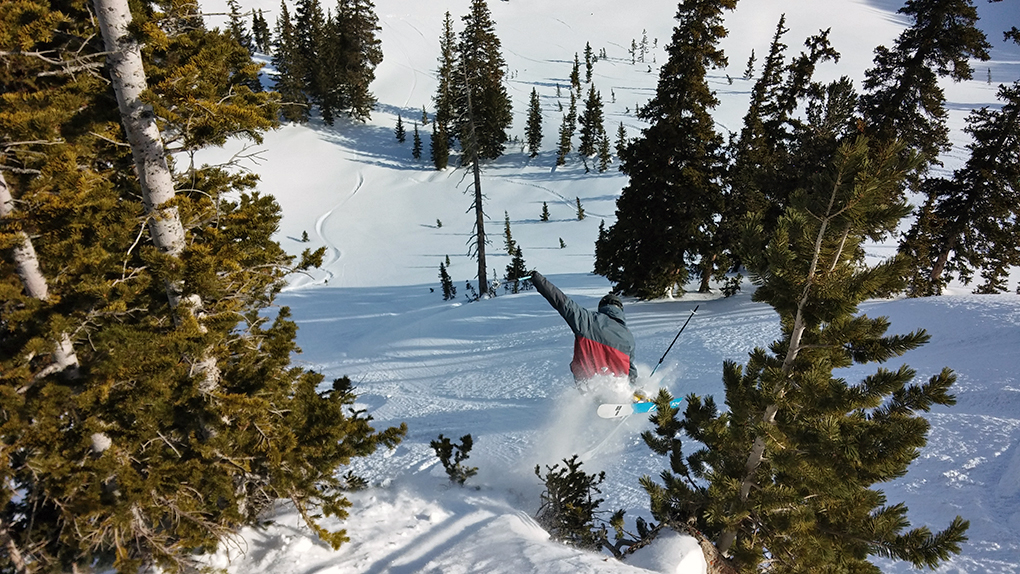Waterproofing
Oakley states that the waterproof rating of the Cottage is 15,000mm. According to our in-house outerwear expert, a waterproof rating of 10,000mm is enough to keep us dry in all but the harshest, wettest environments.
I suppose it shouldn’t be a surprise, then, that the Cottage has kept me 100% dry so far this season in Utah. On the harshest days of the winter so far here, it has performed just as well as any of my high-end Gore-Tex jackets (Oakley Beltline Pro, Scott Ridge). The DWR works very well, and the only time I have seen a portion of the face fabric showing a hint of becoming saturated is while booting up Rocky Point in the Alta sidecountry. This has only occurred on very warm days, where my snow-covered skis rested (and snow melted) on my shoulder.

Warmth
For mid-winter resort riding, I have found that Oakley’s Biozone liner adds the perfect amount of added insulation to the Cottage. For temperatures from 10-30° F, I usually just wear a breathable, long-sleeve base layer and lightweight Scott Komati insulator under the Cottage. Only when temps are below 10° F will I step up to the thicker Scott Kickstart insulator to wear with the jacket. In all of the other jackets I’ve used this season, I make the switch to the heavier insulator when temps drop below about 20° F.
Temperature Regulation / Breathability
The Cottage’s Biozone liner includes moisture wicking and ventilating (open mesh) fabrics in areas of high heat and moisture output (underarms, along the spine, through the midline of the abdomen and chest, and around the neck). However my experience suggests that on the whole the liner still increases the insulating value of the jacket, despite the increased breathability in those specific regions. The “cooling regions” of the liner are noticeably cooler than the insulating ones (so I can’t say Oakley’s Biozone tech seems entirely ineffective), but in general the liner still makes controlling temperature in the jacket more difficult. For example, while hiking a boot pack under direct sunlight and while skiing hard at Alta on warm days (30+° F) I did find the Cottage to be uncomfortably hot and sweat inducing.

During these particularly warm situations, even the Cottage’s 18” underarm vents are not sufficient to control the tropical internal environment. While in the backcountry, I typically stuff the jacket in my pack for the ascents. On the average mid-season day at the resort, however, the vents work perfectly, helping fine-tune the climate inside the jacket throughout the day.
While I can attribute some of the Cottage’s extra warmth to its liner, the jacket’s waterproof/breathable membrane is also seems partially responsible for its shortcomings in breathability. Oakley rates the breathability of the Hydrogauge 15 fabric used on the Cottage at just 10,000g/m2/24hr compared to the 15,000g/m2/24hr rating of the Hydrogauge 20 and 20,000g/m2/24hr of Gore-Tex Pro Shell. Those ratings seem appropriate, as I have noticed significant differences in the breathability and temperature regulating abilities between the jackets with these different shell materials.
Durability
The first thing I noticed when I received the Cottage Jacket was how supple the face fabric felt. It also felt heavier than most of the other shells in my collection. Since I spend most of my days on the hill skiing the northwest and northeast aspects of Alta, my outerwear makes frequent contact with tree parts. The Cottage’s 65% nylon 35% polyester outer shell has held up very well, as has the rest of the jacket, to my usual use and abuse. So far it still looks and performs just as it did the day I pulled it out of the plastic; there isn’t so much as a single scratch on the exterior, and all of the zippers and Velcro closures are working perfectly.
Comparisons
When it comes down to the quality of performance and features offered, I feel like the Cottage has the upper hand over many other brands’ price-point jackets I have used (quite extensively) over the past couple years, including The North Face’s HyVent 2L shell, EMS’s System 3 shell, and Burton’s DryRide 2L shell—all of which are non-insulated. All of these jackets are very similarly priced, but struggle with breathability issues to an even greater extent than the Hydrogauge 15 fabric of the Cottage. None are as packed with features, either.

Bottom Line
Perhaps the most significant compliment I can pay the Oakley Cottage jacket is that, during the heart of the winter, I found myself consistently reaching for it over every other jacket in my possession. That includes the three other more expensive Oakley pieces I’ve tested, the Scott Ridge Jacket, The North Face Gonzo Jacket, EMS Blindside Jacket, and a Burton DryRide 2L shell.
The Cottage isn’t your best option for warm spring days at the resort, or slogging your way to a sidecountry/backcountry booter in the sun. But if you are looking for an affordable, warm, waterproof (in all but the wettest conditions), incredibly comfortable jacket that is full of features and offers a modern park/freeride fit, I have found none better.
And if you’re willing to spend a little more for better breathability and temperature control, stay tuned for my review of the Drifter, which shares many of the same features as the Cottage and comes in a different cut.
